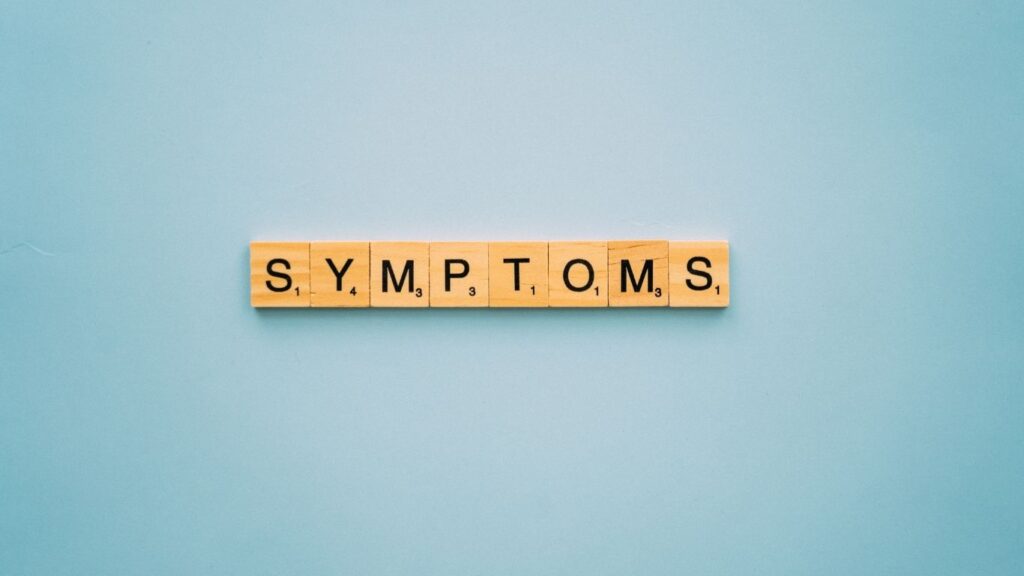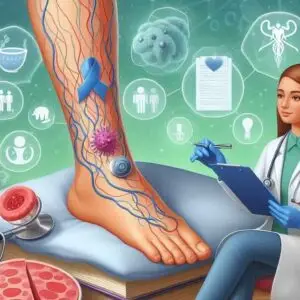How to Monitor and Track Lymphedema Symptoms
Lymphedema is a chronic condition that causes swelling, usually in the arms and legs, due to a blockage in the lymphatic system. It can result from a variety of factors, including cancer treatment, surgery, or even congenital causes. Monitoring and tracking lymphedema symptoms is crucial for managing and preventing complications. This article will explore the key aspects of monitoring lymphedema symptoms, from recognizing early signs to using the latest technologies for symptom management. Whether you’re new to lymphedema or seeking expert tips, this guide will provide practical advice on how to stay proactive in managing your symptoms.
Definition of Lymphedema
Lymphedema is a condition that results from the accumulation of lymph fluid in tissues, leading to swelling. This often occurs in the arms and legs but can also affect other body parts. The lymphatic system, which filters waste and toxins from the body, can become impaired due to injury, surgery, or radiation therapy. This impairment causes fluid to build up, leading to the characteristic swelling from lymphedema.
There are two primary types of lymphedema: primary lymphedema, which is congenital, and secondary lymphedema, which is more commonly caused by cancer treatment, such as surgery or radiation therapy. For individuals undergoing breast cancer treatment, this is a prevalent concern, as removal of the lymph nodes or radiation to lymph node areas can damage the lymphatic system and lead to swelling.
Importance of Monitoring and Tracking Symptoms
Monitoring and tracking lymphedema symptoms are essential for several reasons. First, early detection of swelling and discomfort can help prevent the condition from worsening, minimizing the risk of complications like infections or skin ulcers. Regular monitoring also provides valuable data for doctors and physical therapists, helping to adjust treatment plans effectively.
In many cases, lymphedema is manageable with timely intervention. Tracking symptoms, such as changes in limb size or sensation, can guide adjustments in the treatment plan, whether wearing compression garments, elevating the limb, or undergoing physical therapy.
Overview of the Blog Post Structure
This blog post will cover the following key areas:
- Understanding Lymphedema Symptoms: Key signs and symptoms to watch for.
- Methods for Monitoring Symptoms: Practical techniques for tracking swelling and discomfort.
- Keeping a Symptom Journal: How to document changes and triggers for effective management.
- Conclusion: Why monitoring symptoms is crucial and how to seek professional support.
Let’s dive deeper into how to track and monitor lymphedema symptoms effectively.
Understanding Lymphedema Symptoms
Common Symptoms to Watch For
Lymphedema symptoms can vary from person to person, but there are a few common signs to watch for. Recognizing these early can make a significant difference in managing the condition.
- Swelling in Limbs: Swelling is the hallmark symptom of lymphedema. It may start subtly, feeling tightness or heaviness in the affected arm or leg. Over time, the swelling may become more pronounced and can cause discomfort or pain. In cases of severe lymphedema, the swelling may be extensive, leading to significant changes in appearance and mobility.
- Discomfort or Pain: Swelling from lymphedema may cause discomfort or tightness in the affected area. For some, this can feel like an aching sensation, while others might experience more intense pressure. This discomfort may increase throughout the day, especially after physical activity or prolonged periods of standing or sitting.
- Changes in Skin Texture: The skin may appear tight, shiny, or dry due to the buildup of lymph fluid. In severe cases, the skin might thicken or harden. These changes are essential to note as they can signal the progression of lymphedema. If untreated, skin changes can lead to complications like infections or cellulitis.
Importance of Early Detection
Early detection of lymphedema symptoms is critical in preventing the condition from worsening. Left unchecked, swelling in the limbs may lead to more severe symptoms, including restricted mobility and an increased risk of infections. In addition, untreated lymphedema may cause permanent damage to the lymphatic system, making it harder to manage in the future.
For individuals undergoing cancer treatment, particularly breast cancer treatment or surgery, the risk of lymphedema is higher. Monitoring the early signs of lymphedema can help catch it before the swelling becomes severe and complicated.
Methods for Monitoring Symptoms
Daily Self-Assessment Techniques
Monitoring lymphedema symptoms doesn’t have to be complicated. Several simple methods can help you track changes and keep a close eye on your condition.
- Visual Inspection: Begin by regularly inspecting the affected limb. Look for any noticeable changes in size, shape, or skin texture. If you notice an increase in swelling, a change in skin colour, or a feeling of tightness, it’s time to take action. Early visual inspections can help catch subtle changes before they become severe.
- Measuring Limb Circumference: One of the most effective ways to track lymphedema symptoms is by measuring the circumference of the affected arm or leg. Using a soft tape measure, take measurements at consistent points—such as just below the knee or above the elbow—on both sides of the body. Compare these measurements regularly to detect changes in swelling over time. This can give you a more objective view of how much the swelling is progressing.
Utilizing Technology
In today’s digital age, several tools and devices can assist in tracking and monitoring lymphedema symptoms. These technologies make it easier to manage your condition and stay on top of any changes.
- Mobile Apps for Tracking Symptoms: Several mobile apps are specifically designed for tracking lymphedema symptoms. These apps allow you to log daily observations, record measurements, and set reminders for compression garment use or other treatments. Some apps even allow you to track physical therapy sessions or other relevant health data. These apps can help you stay organized and provide valuable data for your healthcare providers.
- Wearable Devices: Wearables, such as smartwatches or fitness trackers, are increasingly used to monitor lymphedema symptoms. Some wearables can track changes in limb volume, skin temperature, and movement patterns, all of which can provide helpful information about the progression of lymphedema. These devices can also integrate with other health monitoring systems, providing a comprehensive view of your health.
Keeping a Symptom Journal
Benefits of Maintaining a Journal
Keeping a detailed symptom journal can be incredibly beneficial in managing lymphedema. A journal allows you to track symptoms over time and identify potential triggers or patterns. It can also help you remember when symptoms worsen, making it easier to share relevant information with your lymphedema specialist or physical therapist.
Journaling can also offer emotional relief, giving individuals a sense of control over their condition. By documenting your experiences, you can better understand what works and doesn’t in managing lymphedema.
What to Include in the Journal
When keeping a lymphedema journal, include the following information to get the most accurate picture of your symptoms:
- Date and Time of Observations: Record the date and time of each symptom observation. This will help you track patterns and see if symptoms occur more frequently at specific times of the day or during particular activities.
- Activities and Triggers: Note your activities before or after experiencing symptoms. Did a specific physical activity, position, or meal trigger or exacerbate the swelling? Identifying triggers can help adjust lifestyle habits to minimize symptoms.
- Changes in Symptoms Over Time: Note any changes in the intensity or nature of your symptoms. If your arm or leg begins to feel more swollen or tight, document the change. Tracking these fluctuations will help your healthcare provider assess your condition and adjust your treatment plan.
Conclusion
Recap of the Importance of Monitoring Lymphedema
Monitoring and tracking lymphedema symptoms is vital for managing this chronic condition. Whether using simple methods like measuring limb circumference or more advanced tools like mobile apps or wearables, staying on top of your symptoms can help prevent complications and improve your quality of life. Early detection of lymphedema allows for timely intervention, reducing the severity of the condition and minimizing the risk of long-term damage.
Encouragement to Take Proactive Steps
If you or someone you love is living with lymphedema, it’s essential to take proactive steps in managing the condition. Regularly monitoring symptoms, using appropriate tools, and maintaining a symptom journal can significantly affect how well you control your lymphedema. Early intervention is key; small changes today can dramatically impact your health tomorrow.
Final Thoughts on Seeking Professional Guidance and Support
While self-monitoring is integral to managing lymphedema, working closely with healthcare professionals is crucial. A lymphedema therapist or specialist can provide valuable guidance on managing symptoms and developing an individualized treatment plan. Always consult your healthcare provider if you notice significant changes in your symptoms or are unsure about the best way to manage your condition.
By staying informed, proactive, and supported by medical professionals, you can take control of your lymphedema and lead a more comfortable life.
FAQs
Q: What are the common symptoms of lymphedema?
A: The common symptoms of lymphedema include swelling in the arms or legs, a feeling of heaviness or tightness in the affected area, restricted range of motion, and recurring infections. In some cases, skin changes and hardening may also occur.
Q: What can cause lymphedema?
A: Lymphedema can be caused by various factors, such as cancer surgery, radiation therapy, or infections that damage the lymphatic system. Primary lymphedema can occur due to congenital factors, while secondary lymphedema is often linked to other medical conditions.
Q: How is lymphedema diagnosed?
A: Lymphedema diagnosis typically involves a physical examination and a medical history review. Imaging tests may also assess lymphatic flow and identify the extent of swelling.
Q: What treatments are available for managing lymphedema symptoms?
A: Treatments for lymphedema may include compression garments, physical therapy, and manual lymph drainage. In some cases, lymphedema surgery may be an option to improve lymphatic drainage.
Q: How can I manage lymphedema at home?
A: Living with lymphedema involves self-care strategies such as wearing compression garments, maintaining a healthy weight, exercising regularly, and practising skin care to prevent infections. Monitoring symptoms and consulting a healthcare provider for tailored advice is essential.
Q: Is there a cure for lymphedema?
A: Currently, there is no cure for lymphedema, but with effective lymphedema treatment and management strategies, symptoms can be controlled and improved. Early intervention is crucial to prevent complications of lymphedema.
Q: What complications are associated with lymphedema?
A: Complications of lymphedema can include infections such as cellulitis, skin changes, and significant discomfort. Severe lymphedema, due to the visible swelling, can also lead to mobility issues and psychological impact.
Q: Are specific individuals at a higher risk of developing lymphedema?
A: Yes, individuals who have undergone cancer surgery, particularly breast cancer surgery, or those with a family history of primary lymphedema may be at a higher risk of developing lymphedema.
Q: What is the difference between primary and secondary lymphedema?
A: Primary lymphedema is a hereditary condition that occurs without any known cause, often manifesting at birth or during puberty (lymphedema praecox) or later in life (lymphedema tarda). Secondary lymphedema occurs due to damage to the lymphatic system, commonly from cancer surgery or radiation therapy.





